The Sundara Kanda is among the most sacred of all scriptures recommended for recitation parayana). Many methods of parayana are prescribed for obtaining special benefits or relief from ailments, danger, for expiation of sins committed, and so on. However, the greatest benefit which can accrue is the transformation which we can bring to our lives. For this, we need to do the parayana not only with devotion but also with understanding. For most of us whose knowledge of Sanskrit is limited or negligible, we need to read or listen to discourses (pravachana) to draw the lessons contained in this treasure-house.
A few obvious lessons are enumerated below, in an attempt to stimulate our thought and incorporate these lessons in our lives, and those of our near and dear ones. The most important thing is to realize that study of scriptures has a practical use in our lives and are not just some mysterious words to be chanted blindly and forgotten as soon as the puja is over. The real power lies not in the words but in their effect on us and our lives!
 Lesson 1: Acting with determination (sankalpa), we can transform our lives in an instant.
Lesson 1: Acting with determination (sankalpa), we can transform our lives in an instant.
We always say, “Rome was not built in a day”. This is our excuse for procrastinating. We deliberately limit our expectation and think that great tasks can only be achieved over a longtime- frame.To achieve great success,what is needed is not time but sankalpa which can be translated as ‘solemn resolve’. To put things in perspective, the entire episode of Sundara Kanda takes place over a period of just 24 hours. Just imagine, in this short period Hanuman, reminded of his dormant power by Jambavan, crosses the ocean, searches for and finds Sita, reassures her, tests the power of Ravana’s army, strikes fear by burning Lanka, returns back to his comrades and delivers Sita’s message to Rama, Lakshmana and Sugriva! Not just that, he finds time to celebrate his success by drinking honey with his comrades in the delightful episode of Madhuvana! What a versatile character! All these events that changed the course of the entire Ramayana took place within 24 hours (a mere instant in the time frame of the Epic) due to the sankalpa of Hanuman.
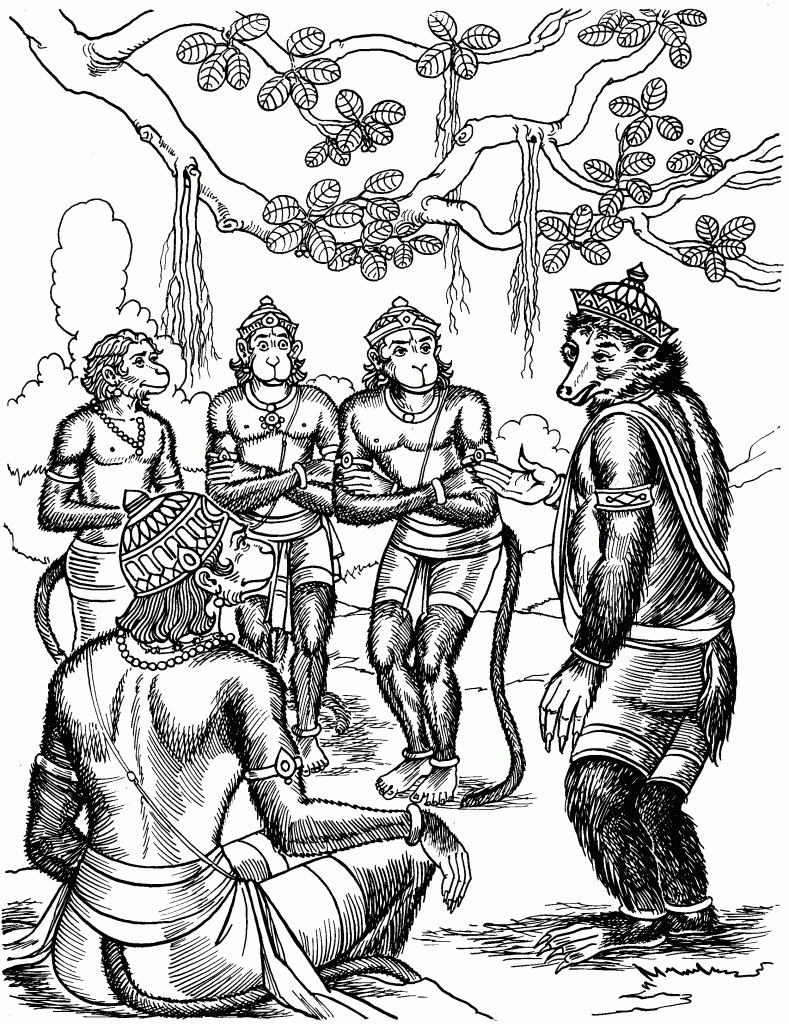 Lesson 2: When starting any great venture, invoke the blessings of Gods and elders.
Lesson 2: When starting any great venture, invoke the blessings of Gods and elders.
Hanuman invoked the blessings of Sun God, who is his guru, Indra the king of the celestials and Brahma, the creator.Then he saluted his own father and then Sri Rama and Lakshmana. Then he bowed down to all rivers and oceans.Then he embraced his comrades and circumambulated them! Then he turned his thoughts to the journey ahead. Dear friends, we need to remember that in all great tasks we undertake in life, we need the blessings of the deities and our elders and the good wishes of our friends and comrades who form our support groups.
 Lessons 3: Have confidence in yourself.
Lessons 3: Have confidence in yourself.
Hanuman epitomizes self-confidence from the moment Jambavan reminds him of his latent powers. From that time, he is strange mixture of utter humility and boundless self-confidence! If only we could inculcate both these traits in us, we would all be like him. If only we believe in ourselves, we can achieve anything.
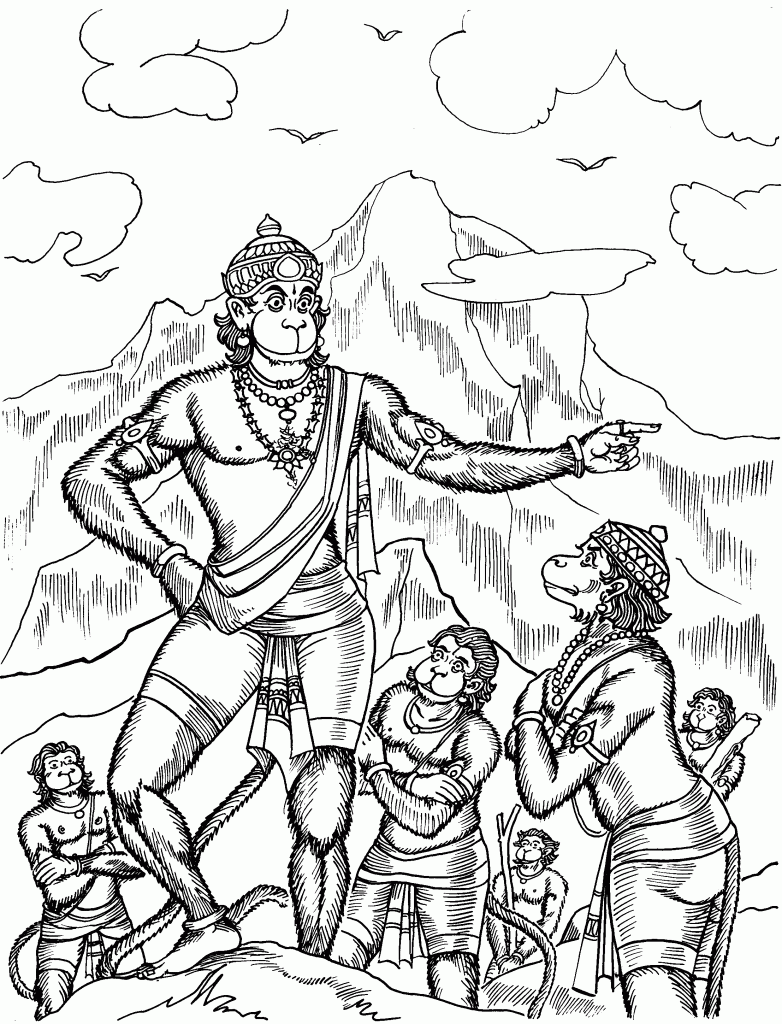 Lessons 4: Set clear objectives, express / verbalize them, and reinforce them periodically.
Lessons 4: Set clear objectives, express / verbalize them, and reinforce them periodically.
Beginning his journey, Hanuman resolves that he will go to Lanka swiftly like Sri Rama’s arrow. If he fails to find Sitadevi there, he will go to heaven and search among the Devas. If he fails there also, then he will bind Ravana and bring him back! By any means he will achieve his task, otherwise he will uproot the whole of Lanka and bring it back! Can there be a more clear statement of intent?We also find that time and again, when he decides the time of his entry into Lanka, while searching for Sitadevi in Ravana’s palace, while deciding to search the Asoka-vana, while deciding how to address Sitadevi there, before the destruction of the grove, prior to the burning of Lanka, in fact at the start of every major action, or when he feels stuck, he expresses his objectives clearly and repeatedly.
Lesson 5: Draw up a plan of action and examine the implications of every step.
Throughout, Hanuman never rushes into action without an action plan for achieving the task ahead and examining its implication(s).This is amply demonstrated in all the tasks which are mentioned above. Throughout, his focus is exclusively on whether the task he does furthers his main objective or not.
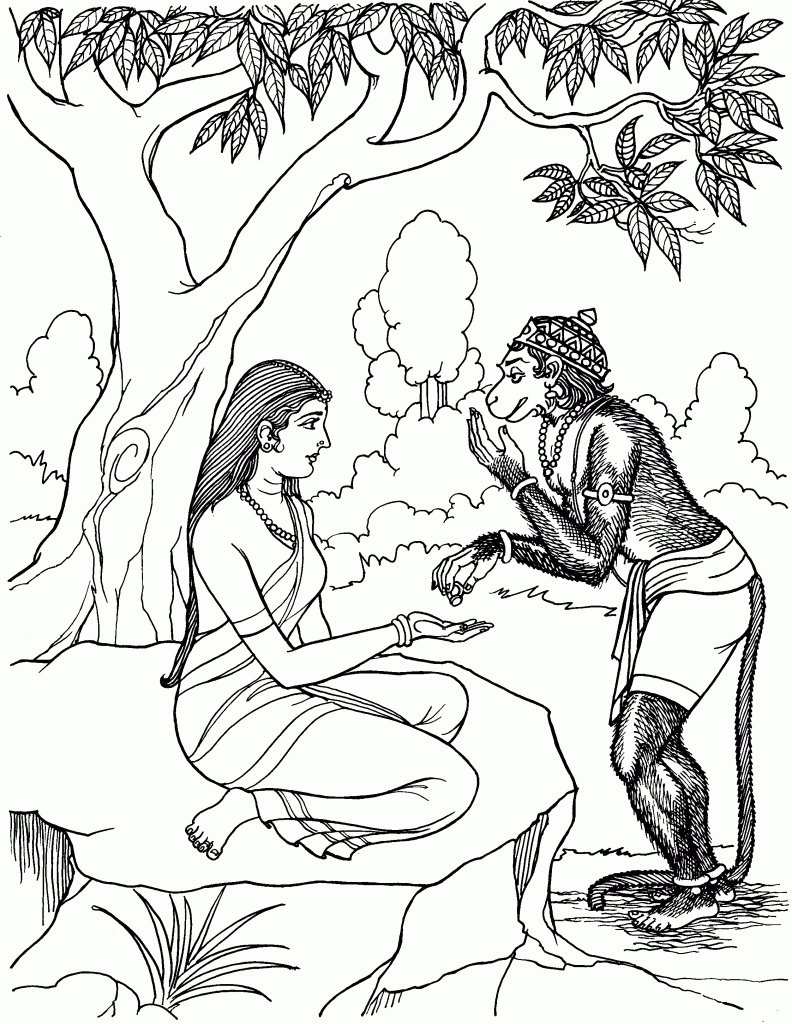 Lesson 6: Ignore all distractions and learn to say ‘no’.
Lesson 6: Ignore all distractions and learn to say ‘no’.
When Mount Mainaka offers him a resting place with all good intentions, Hanuman politely declines the offer and continues on his journey. However he gently explains the reasons to the mountain and retains its goodwill. Lesson for all is here indeed! Similarly when he is searching for Sitadevi in Lanka, he takes in all the sights, like the grandeur of Pushpaka Vimana, Ravana’s palace, the beauty of the women, the aroma of the many dishes in the kitchens and yet allows none of these wonderful things to distract him from his objective.
Lesson 7: Different strokes for different folks!
One of the most important lessons to be learnt is to be innovative and use different strategies to deal with different people and situations.The way Hanuman tackles the various obstacles which come his way while crossing the ocean, and during his stay in Lanka using different tactics and improvising along the way, amply demonstrates this. A Case in point: the way he tricks Surasa by increasing his size and then shrinking it and then going into her mouth and coming out. Similarly he appears before Sitadevi in a miniscule form and then, when She doubts his ability to carry Her away to Sri Rama, he shows Her his huge form, showing his true power
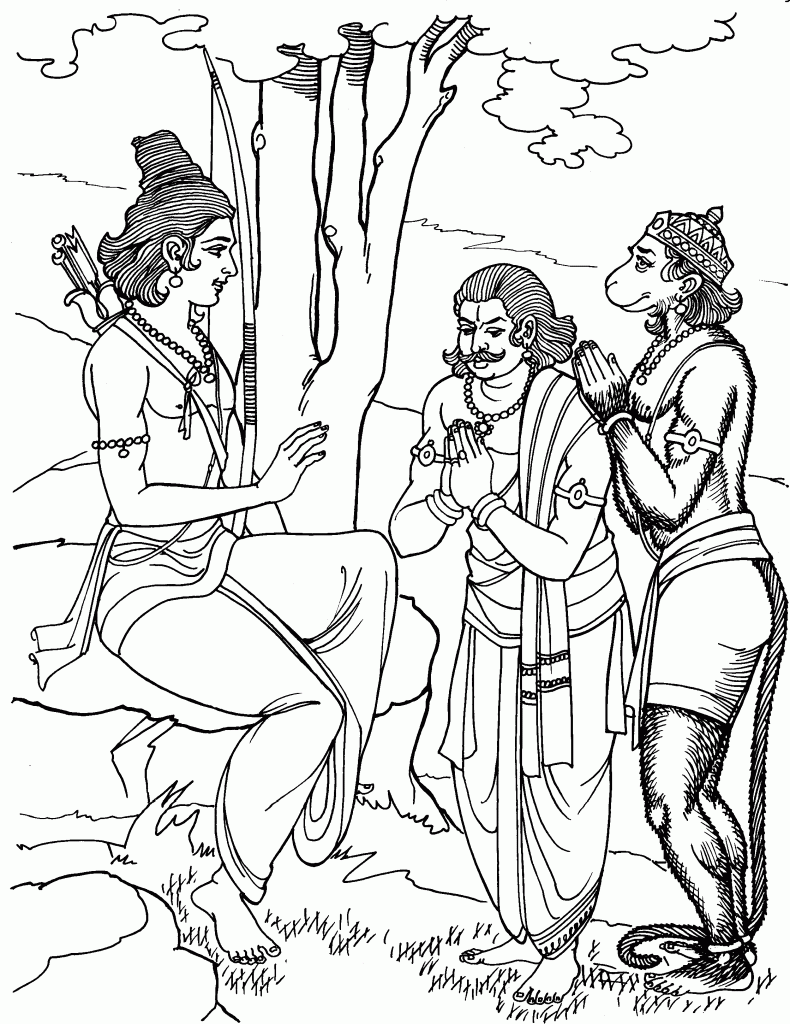 Lesson 8: Go beyond your brief and you may end up as the boss (job enrichment).
Lesson 8: Go beyond your brief and you may end up as the boss (job enrichment).
Initially Hanuman is just one of the group of monkeys assigned to go in the southern direction to get news of Sitadevi. Due to an ancient curse, he is not even aware of his boundless strength and ability. Only Lord Rama and Sugriva recognize his wisdom and latent potential. Sri Rama even gives him His ring realising that he is the one most likely to find Sitadevi. When all other monkeys and bears fail to summon up the courage to attempt crossing the vast ocean, Jambavan exhorts Hanuman, reminding him of his boundless power, and he sets off on his mission. Of course, the scope of action enlarges as he achieves one objective after another. For example, he first focuses on discovering the whereabouts of Sitadevi. Once She is discovered, he could have justifiably returned back, satisfied with having done his job. However, seeing Her mental state, he approaches and consoles Her and gives Her a new lease of life! Even then he is not satisfied!He decides to test the strength of Ravana’s army.The destruction of Asoka-vana follows.The subsequent meeting with Ravana, conveying Sugriva’s message to him and the burning of Lanka now set the stage for Sri Rarna’s eventual triumph and fulfilment of the purpose of his avatara. At one stage, Hanuman even threatens to cut short the whole process by offering to carry Sitadevi away to Sri Rama on his shoulder. It is left to Mother Sita to rescue the prestige of Her Lord Sri Rama by refusing to leave surreptitiously and insisting that He Himself come to rescue Her. One can’t help imagining that it was Sitadevi’s subtle hint which prevented Hanuman from taking on Ravana, Indrajit and other r a k s h m in battle. We could speculate that, he could probably have finished off the entire lot by himself! Anyway on a more serious note,we observe that Hanurnan always expanded the scope of his action within the boundaries of his original mission and with confidence in his own power, never taking unnecessary risks which would jeopardize his mission.
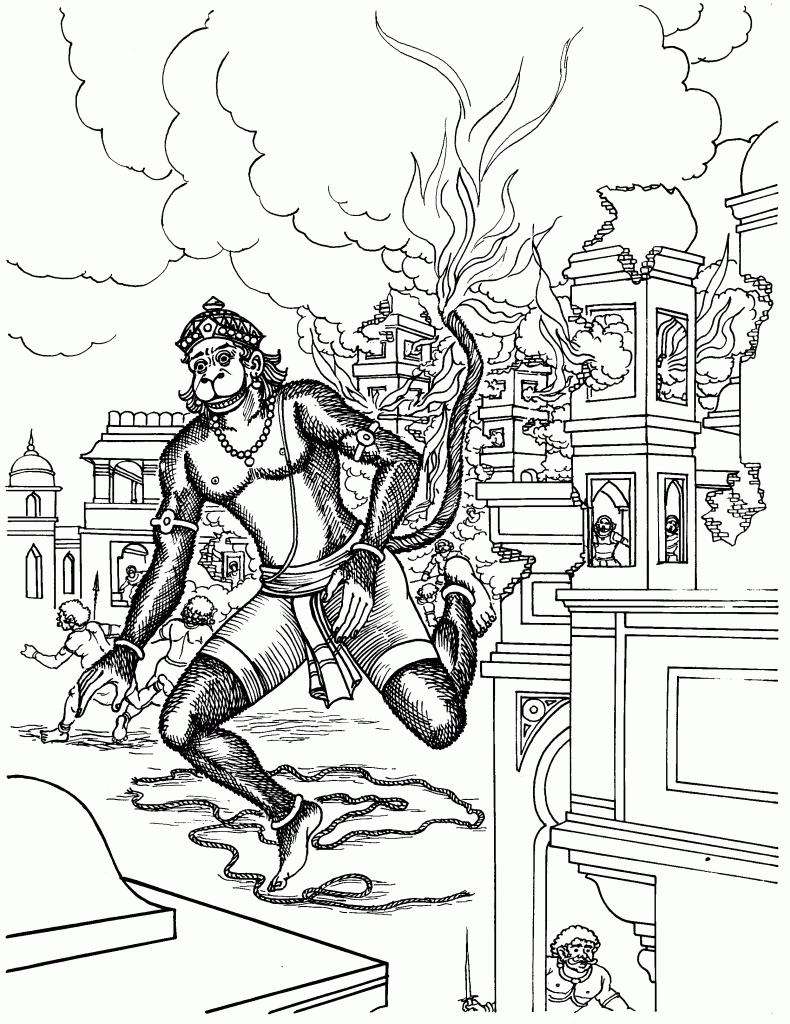 Lesson 9: Pay attention to the details while executing any task.
Lesson 9: Pay attention to the details while executing any task.
One simple example will suffice. Hanuman debates which language to use when addressing Sitadevi. If he addresses Her in the polished language of noble people, Sitadevi would be confused as to how a monkey could speak thus! So he decides to use the language of common people. Similarly, to make his presence felt to Sita devi without alarming Her, he recites the story of Sri Rama and His meeting and friendship with Sugriva in a sweet voice, knowing that this would be pleasant to Her ears and soothe Her fears. Friends, even the greatest ideas need to be properly implemented and that needs such attention to the details during execution!
Lesson 10: Courage is not absence of fear but how well we overcome it.
The two most courageous characters in the Sudara Kanda are undoubtedly Mother Sita and Hanuman. However, at various points, they are assailed by fear and doubts. When Hanuman sets eye on Ravana for the first time his heart trembles. Then imagine how Sitadevi must have felt every time Ravana approached Her! Valmiki describes Her as trembling like a plantain leaf in the wind (prabale kadnee yathaa). But the true measure of Her courage comes when, in response to Ravana’s entreaties and temptations, She tells him to his face that, having belonged to SriRama She cannot even consider his offer. Not only that, She also advises him to surrender to Sri Rama to save his life and his race. That, friends, is true courage!
Lesson 11: Think positive, don’t give in to depression.
Fear of failure and its supposed consequences haunt Hanuman throughout his arduous search for Sitadevi during the night. At times, he is overwhelmed and-becomes almost paralyzed. However, every time he shakes off his depression. Whenever we are overwhelmed by fear or depression, we can try reciting the prayer which Hanuman recites before entering Asoka-vana. It is certain to uplift our spirits and give renewed vigour and energy.
To sum up, our scriptures are storehouses of practical knowledge and not a collection of mysterious sounds and mythical fiction. Their power is not in the words but in the effect they can have on our lives.

Source: Nrushimapriya









thanks for this page.. i stumbled into this page, when i was confused and depressed.
How true the words are and the applies to our practical life.
thanks so much..
I will start my SundaraKandam parayanam tomorrow morning – sep 26/13 and continue till my life time. truly, uma.
Thanks uma because of your comment i got to see this page today, which is published in this portal long back.
Very nice art work and sketches some of which I have copied for my book. If you have any objection pl let me know immediately.
Thanks
OP VERMA
Thank you so much for nice explanation.Very inspiring.Thanks to Anudinam.
I CHANTED SO MANY TIMES THE sundarakanda AND LORD HANUMAN GIVING HIS BLESSINGS EVERYDAY. iREAD SUNDARAKANDA TILL MY LIFE ENDS
Thank you very much Anudhinam.I am aged 58 but still a lot to learn in life. And now through you I have learnt a lot and Sundarakand is the essence of life itself.Ram Ram Sita Ram.Sri Rama Jayam.Jai Jai Sri Hanuman Ki Jai.Let us Praise God and sing about God’s glory.
I have gone through ups and downs in life. For the last over 7 years I have been regularly chanting Hanuman Chalisa every day in the morning after my bath and it has helped me a lot. I still need to learn a lot, especially shun my bad temper and ignore uncharacteristic remarks made by others. I bow before the lord to help me attain this and more. Jai Jai Jai Hanuman Gosahin, Kripa Karahu Gurudev ki nyahin.
hi,
which sarga of sundarakanda i should read to remove health problems
Just a note without any intention to offend an otherwise nice article.
Near Lesson 6, there is a beautiful drawing of Hanuman handing over the signet ring to Rama.
वानरोऽहं महाभागे दूतो रामस्य धीमतः।
रामनामाङ्कितं चेदं पश्य देव्यङ्गुलीयकम्।।5.36.2।।
is the sloka depicting this incident.
Valmiki has very puposefully used the word ‘पश्य’ which means ‘please see’.
It is believed that Hanuman held the ring in his palm and requested Sita to see it. He did not give it because that would mean that she would have to receive it with her palms stretched. Hanuman would not want Sita to stretch her palm and have him drop them into hers. That would not be noble.
It would be great if the drawing could be changed along these lines – with Sita’s hand over Hanuman and not below.
thanks
Great to read !